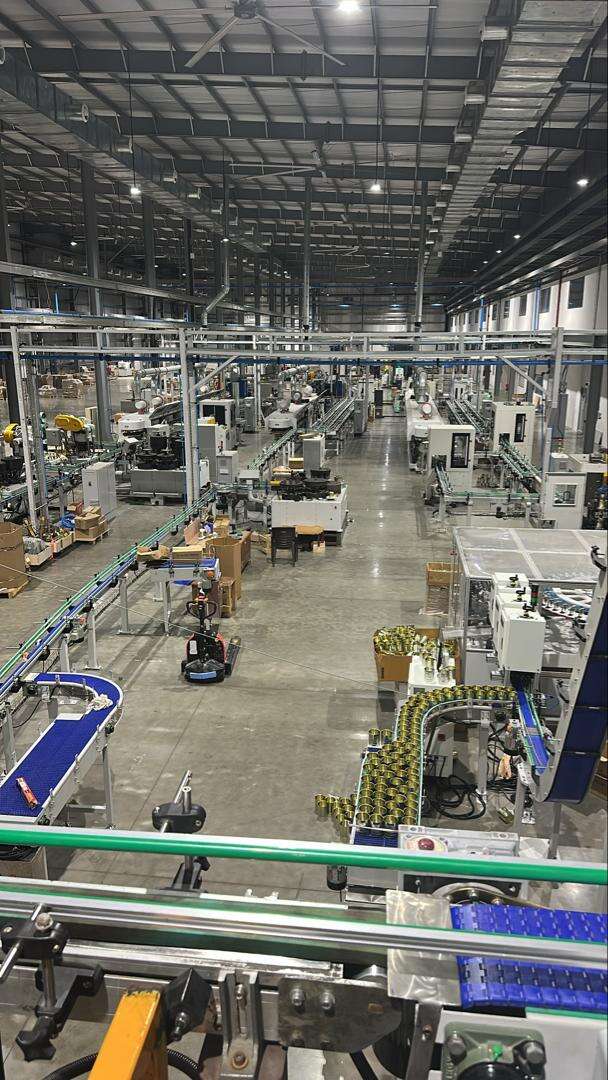Why the tittle is cans manufacturing process,it means there are more than one kinds of cans with different manufacturing process.There are three pieces cans and two pieces can,two pieces can can be made with tinplate and aluminum,three pieces cans usually made with tinplate.
We usally simply call tinplate cans as tin cans,What's "tin cans," most food and beverage cans today are made primarily from steel(ferrous metal) or aluminum (non-ferrous metal). The term "tin" comes from the thin layer of tin plating that is applied to the steel to prevent rusting. Aluminum cans don't require this tin layer.
The process differs significantly between two-piece cans(used mostly for beverages) and three-piece cans (used for many food products). We'll cover both.
Raw Materials
1. Steel:Usually low-carbon, cold-rolled steel coil. It's strong, inexpensive, and magnetic (useful for conveyor systems).
2. Tin:A thin layer electroplated onto the steel to prevent corrosion and protect the food's flavor. This steel is called Tinplate.
3. Aluminum:Used for most beverage cans. It's lightweight, corrosion-resistant, and easily molded.
4. Lacquer or Enamel:An organic coating applied to the interior of the can to prevent the metal from reacting with the food or beverage (e.g., preventing a metallic taste).
5. Sealing Compound:A rubber-like material used in the lids to ensure an airtight seal.
The Manufacturing Process: Two Main Methods
1. The Three-Piece Can Manufacturing Process
This method creates a can from three separate pieces: a cylindrical body and two ends (lids). It's commonly used for soups, vegetables, paints, and aerosols.
Step 1: Making the Body Blank
A large coil of tinplate steel is fed through a slitter to cut it into individual rectangular sheets.
Step 2: Coating and Curing
These sheets are coated with a protective lacquer (inside and out) and passed through a high-temperature oven to cure(bake dry) the coating.
Step 3: Cutting and Curling
The coated sheets are fed into a cupping press that blanks (stamps out) the rectangular body blanks.
The blanks are fed into a machine that rolls them into a cylindrical shape.
Step 4: Soldering, Welding, or Cementing
Historically:The side seam was sealed by soldering (using a lead-based solder, now obsolete for food cans).
Modern Method (Welding):The two edges of the cylinder are brought together and welded electrically. This creates a strong, safe seam without added metals.
Alternative Method (Cementing):For some cans, the seam is bonded with a nylon adhesive, which is then heat-cured.
Step 5: Flanging
The top and bottom of the cylindrical body are flared outward (flanged) to form a ledge. This flange will later accept the lid and allow it to be crimped on.
Step 6: Making the Ends (Lids)
This is a separate but parallel process. A coil of aluminum or steel is fed into a press that stamps out thousands of shallow, concave disks per hour.
The edges of these disks are curled
A sealing compound is sprayed into the curl of the lid.
The ends are then coated with lacquer and cured.
Step 7: Seaming (Closing the Can)
One end (lid) is placed on the flanged body.
A machine called a closer or seamer uses rotating rollers to roll the curl of the end and the flange of the body together, creating a double-sealed, airtight double seam. After the product is filled, the same process is used to attach the second end.
2. The Two-Piece Can Manufacturing Process (Drawn and Ironed - D&I)
This method creates a can from just two pieces: a seamless body-and-bottom section, and one top end. It's almost universally used for beverages like soda and beer.
Step 1: Cupping
A coil of aluminum (or steel) is lubricated and fed into a cupping press.
The press uses a tool and die to simultaneously blank and draw hundreds of shallow cups from the sheet with each stroke.
Step 2: Drawing and Ironing (D&I)
These shallow cups are pushed through a series of tungsten carbide ironing rings.
This process thins and elongates the side walls of the cup dramatically while the base remains thick and strong. This creates a tall, seamless cylinder. This is the core of the D&I process.
Step 3: Trimming
The can body is now like a tall cup with a rough, uneven top edge.
A high-speed rotary trimmer cuts the can to a precise, uniform height.
Step 4: Washing and Coating
The trimmed cans are inverted and washed to remove any lubricants from the ironing process.
The exterior is then printed with the product design and coated with a protective clear varnish.
The interior is sprayed with a specialized lacquer (e.g., to prevent acid in soda from reacting with the metal) and cured in an oven.
Step 5: Necking (Beaming)
For beverage cans, the top diameter must be narrower than the body to allow for a smaller, lighter, and cheaper end.
The cans are passed through a series of dies that gradually **neck-in** the top of the can. Modern systems can do this in as few as 7-8 stages to create a distinctive tapered neck.
Step 6: Flanging
The newly formed neck is flanged at the very top to create a seat for the eventual lid.
Step 7: Making and Attaching the End
The lid (end) is made in the same way as for three-piece cans.
After the can is filled with the beverage, the lid is seamed on using the same double-seam process.
Quality Control
Throughout the entire process, cans are rigorously checked for defects. Key tests include:
Leak Testing:Cans are pressurized and checked for air bubbles in water.
Seam Inspection:Micrometers are used to meticulously measure the dimensions of the double seam to ensure integrity.
Coating Integrity:Tests like electrolytic tests check for pinholes in the interior lacquer coating.
This highly automated process allows modern canning lines to produce thousands of cans per minute, providing a durable, lightweight, and safe package for a vast array of products
If you want to set up a can line plant,you need decide what kind of cans it would produce?Three pieces can or two pieces can,all dia of the cans you would make?And what speed you require?What material you need?Then you can source from https://www.google.com/
Tap key word can palletizer,tin can making machine to find a excellent supplier,we strongly suggest Hubei Baoli Technology Co.Ltd,their machines are competitive and high quality,get contact with them right now.

 EN
EN
 AR
AR
 HR
HR
 DA
DA
 NL
NL
 FI
FI
 FR
FR
 DE
DE
 EL
EL
 HI
HI
 IT
IT
 JA
JA
 KO
KO
 NO
NO
 PL
PL
 PT
PT
 RO
RO
 RU
RU
 ES
ES
 SV
SV
 TL
TL
 IW
IW
 ID
ID
 LT
LT
 SR
SR
 VI
VI
 SQ
SQ
 HU
HU
 TH
TH
 TR
TR
 AF
AF
 MS
MS
 GA
GA
 BN
BN
 HA
HA
 IG
IG
 MR
MR
 NE
NE
 YO
YO
 MY
MY
